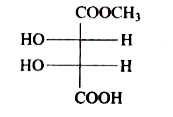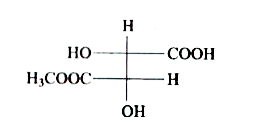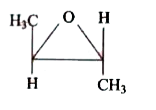When lactose is digested by the body each lactose molecule is broken down into smaller molecules. To which of the following categories of molecules do these smaller molecules belong ?
The group having a zwitter ion
The non - hydrozable group which is crystalline , sweet to taste and has asymmetric carbon atoms
The group which are esters
The group which has nitrogen in them
The correct Answer is:B
To solve the question about the digestion of lactose and the resulting smaller molecules, we can follow these steps:
1. Understanding Lactose Digestion:
- Lactose is a disaccharide sugar composed of two monosaccharides: glucose and galactose.
- When lactose is digested in the body, it is broken down into these two smaller molecules.
2. Identifying the Smaller Molecules:
- The smaller molecules produced from the digestion of lactose are glucose and galactose.
- Both glucose and galactose are classified as monosaccharides.
3. Analyzing the Options:
- Option A: Group having a zwitterion: Zwitterions are typically associated with amino acids, not carbohydrates. Therefore, this option is incorrect.
- Option B: Non-hydrolyzable group which is crystalline, sweet to taste, and has asymmetric carbon atoms: This accurately describes glucose and galactose. They are both non-hydrolyzable (cannot be broken down further), crystalline (they can form crystals), sweet to taste (they are sugars), and have asymmetric carbon atoms (they are chiral). This option is correct.
- Option C: Group which are ester: Glucose and galactose are not esters; they are carbohydrates. Thus, this option is incorrect.
- Option D: Group which has nitrogen in them: Glucose and galactose do not contain nitrogen; they are made up of carbon, hydrogen, and oxygen. Therefore, this option is also incorrect.
4. Conclusion:
- Based on the analysis, the correct answer is Option B, as glucose and galactose fit the description of being a non-hydrolyzable group that is crystalline, sweet to taste, and has asymmetric carbon atoms.
- Lactose is a disaccharide sugar composed of two monosaccharides: glucose and galactose.
- When lactose is digested in the body, it is broken down into these two smaller molecules.
- The smaller molecules produced from the digestion of lactose are glucose and galactose.
- Both glucose and galactose are classified as monosaccharides.
- Option A: Group having a zwitterion: Zwitterions are typically associated with amino acids, not carbohydrates. Therefore, this option is incorrect.
- Option B: Non-hydrolyzable group which is crystalline, sweet to taste, and has asymmetric carbon atoms: This accurately describes glucose and galactose. They are both non-hydrolyzable (cannot be broken down further), crystalline (they can form crystals), sweet to taste (they are sugars), and have asymmetric carbon atoms (they are chiral). This option is correct.
- Option C: Group which are ester: Glucose and galactose are not esters; they are carbohydrates. Thus, this option is incorrect.
- Option D: Group which has nitrogen in them: Glucose and galactose do not contain nitrogen; they are made up of carbon, hydrogen, and oxygen. Therefore, this option is also incorrect.
- Based on the analysis, the correct answer is Option B, as glucose and galactose fit the description of being a non-hydrolyzable group that is crystalline, sweet to taste, and has asymmetric carbon atoms.
Similar Questions
Knowledge Check
Which of the following are identical molecules?
Aa) Bb)
Bb) Cc)
Cc) Dd)
Dd)
Which of the following are identical molecules?
A B
B C
C D
D
Which of the following is a chiral molecule?
A1-chloro propaneB2-chloro propaneC1-chloro butaneD2-chloro butane

